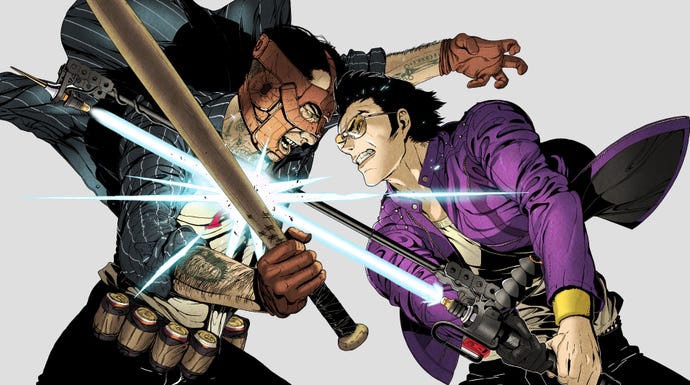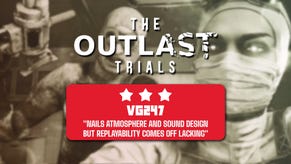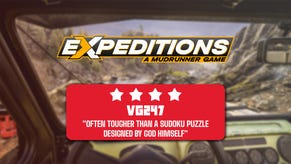Travis Strikes Again: No More Heroes Review
Will the real Travis Touchdown please stand up? Please stand up?
This article first appeared on USgamer, a partner publication of VG247. Some content, such as this article, has been migrated to VG247 for posterity after USgamer's closure - but it has not been edited or further vetted by the VG247 team.
When Travis Touchdown first entered the scene in No More Heroes on the Wii in 2008, he became a cult-hit. A decade later, his post-modern, fourth wall breaking antics have become mainstream thanks to hits like Deadpool. But Travis Strikes Again: No More Heroes for Nintendo Switch makes a strong case that Travis Touchdown is more than just another merc with a mouth, and that Goichi "Suda51" Suda's games at Grasshopper Manufacture are more than just art school curiosities. Travis could actually be a true hall of famer.
I was a teenager when the first No More Heroes game came out. Impressionable, young, and very, very dumb. I was the prime audience for someone like Travis Touchdown. A gonzo, fourth-wall breaking bloodhound who reveled in sex, violence, and meta pop-culture references. How could a burgeoning snob not be enamored by Travis' love of Star Wars, wrestling, and everything else geek culture?
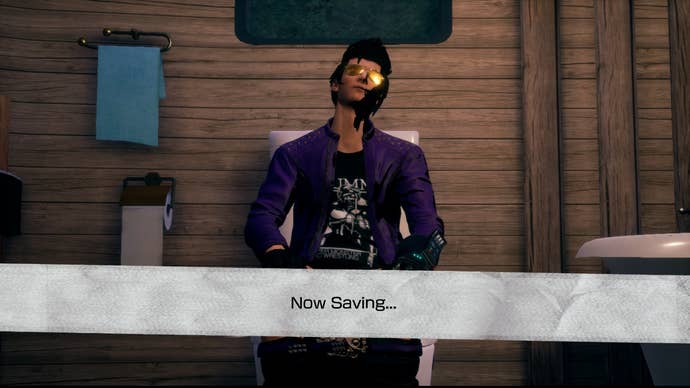
Booting up Travis Strikes Again I was afraid. While it's a good practice to jump into a review with an open mind, a part of me was worried that revisiting Travis would be confronting my youth. How many things that you thought were cool as a teenager ended up being cool once you became an adult? Not a lot survives the passage of time. Worst-case scenario, Travis Touchdown's post-modern fetishism could have ended up looking like the nauseous callbacks in Ready Player One.
I underestimated Suda51, who returns to the directing chair for Travis Strikes Again; he hasn't had a main director's credit since 2012's Liberation Maiden. The stylish punk verve that made No More Heroes a fan-favorite was no accident, and Travis Strikes Again is a good reminder that enough style can become its own kind of substance.
Travis Strikes Again takes place after the events of No More Heroes 2 on the Wii. After killing his way to becoming the number one assassin in the fictional city of Santa Destroy, Travis has hidden himself away in a trailer somewhere in Texas with nothing but his cat Jeane and some video games. The game begins when Badman, the father of No More Heroes boss Bad Girl, barges into Travis' trailer looking for revenge. After some fighting, both of them get sucked into the Death Drive Mark II, a video game console created by the mysterious Dr. Juvenile.
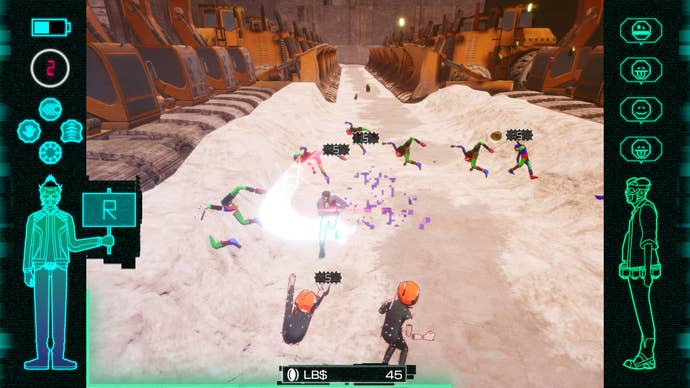
The gameplay is influenced heavily by Dennaton Games' Hotline Miami, a game Suda51 has previously expressed admiration for. Instead of the third-person action of the past two No More Heroes games, Travis Strikes Again is a top-down arcade-y button masher where Travis can jump, roll dodge, and slice enemies using either light or heavy attacks. You can actually also play as Badman through the whole game, but the differences are mostly small gameplay differences and a couple dialogue changes.
There are also special skills that players can collect along the way that give Travis and Badman up to four unique abilities at any given time. These include skills like lightning blasts or area of attack abilities that slow down enemies within a certain radius. All of these skills are moves that Travis didn't have in previous games, but they're incredibly useful and sometimes overpowered. The Psycho Chip for instance can stun several enemies at once which is great since it compensates for the difficult dodging. But at the same time I found myself relying on it too much throughout my playthrough.

While the arcade style and new skills are interesting, combat isn't as tight as it was on the Wii-era No More Heroes games. Roll dodges are sometimes too hard to time properly and building up a combo meter is quite difficult as a result. It's a shame too because if the combat was just a little bit smoother, I'd have had an easier time experiencing the parts of Travis Strikes Again that truly shine: the bosses, levels, and story.
Each level is one of six different "Death Balls," the fictional cartridges that go into the Death Drive Mk. II. Though there's a unique gameplay twist in each level, the arcade-style combat is present throughout all of Travis Strikes Again. The fun is in the individual gimmicks, which are as small as a simple shift in camera perspective, and as large as entire racing minigames. There might not be enough change level-to-level to say that each stage feels like an entirely new game, but there's a lot to appreciate whenever Travis jumps between levels.
Like the previous No More Heroes games, each stage has a unique boss. The boss battles are some of the best fights in the game, with each fight split into several sections. Suda51 tapped UK designer Boneface to help design the bosses in the game. If you're familiar with Boneface's work then it's a perfect fit. The Liverpool artist is known for their grungy, bloody take on pop-culture and the boss designs are driven by this same spiky aesthetic. The first boss is a video game protagonist turned villain called Electro Triple Star who looks like a punk rock version of the Batman villain Mr. Freeze, only he uses electricity instead of ice. If No More Heroes is known for anything, it's for the cool boss fights and Travis Strikes Again delivers.
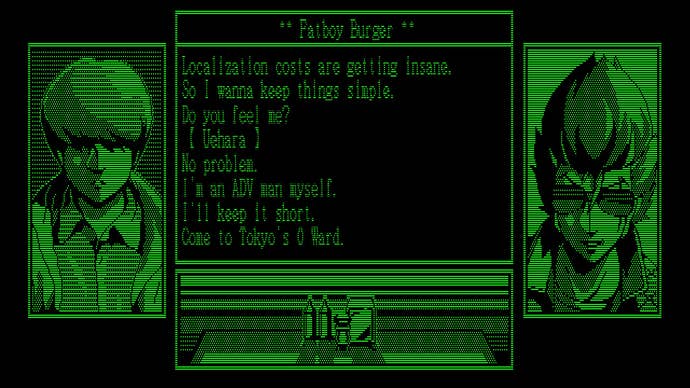
Meanwhile, Travis' trailer serves as a hub, where he can go to shop for new t-shirts, review collectibles, and go to the story portions of the game. That story is largely separate from the playable Death Drive portions and are told in the style of 1980s Japanese PC visual novels complete with Apple 2-era pixelated graphics. It's here that a bulk of Suda 51's ear for post-modern dialogue plays out, with everything from references to movies, video game review sites, and even Deadpool himself. There are plenty of pop-culture references abound in Travis Strikes Again, but I found myself laughing more than groaning. Like Deadpool, Travis is self-aware enough to know when he's becoming obnoxious. The writing also pulls back on the references when needed, introducing something unique to the world of No More Heroes.
Travis Strikes Again: No More Heroes feels like a band's bootleg recording. It's a deep cut meant for diehard fans of Grasshopper Manufacture games and Suda51. Meanwhile curious newcomers might be better off going back and checking out the hits. And while there's enough flash and style to delight anyone looking for a cool new game for their Nintendo Switch, it's hard to recommend this to anyone not already accustomed to No More Heroes' sharp edges.
ConclusionI missed Travis Touchdown. I missed Suda51's punk verve. Travis Strikes Again is stylish in all the right ways. It looks cool, the music sounds great, and the game consistently zigs when I fully expected it to zag. At the same time there's not a lot here for players who aren't already devoted to the world of No More Heroes or even the larger Grasshopper Manufacture universe. But if you're tired of hacky attempts at too cool for school meta commentary, Travis Touchdown is here to take gaming post-post-modern.
